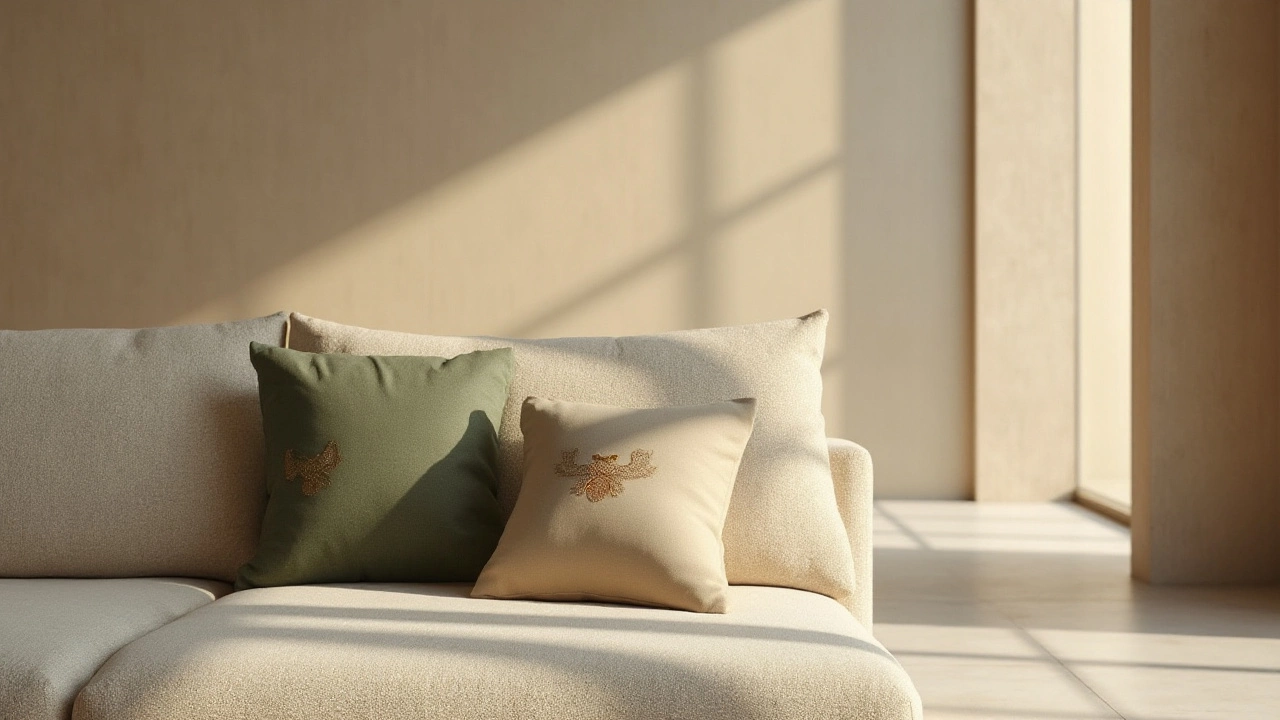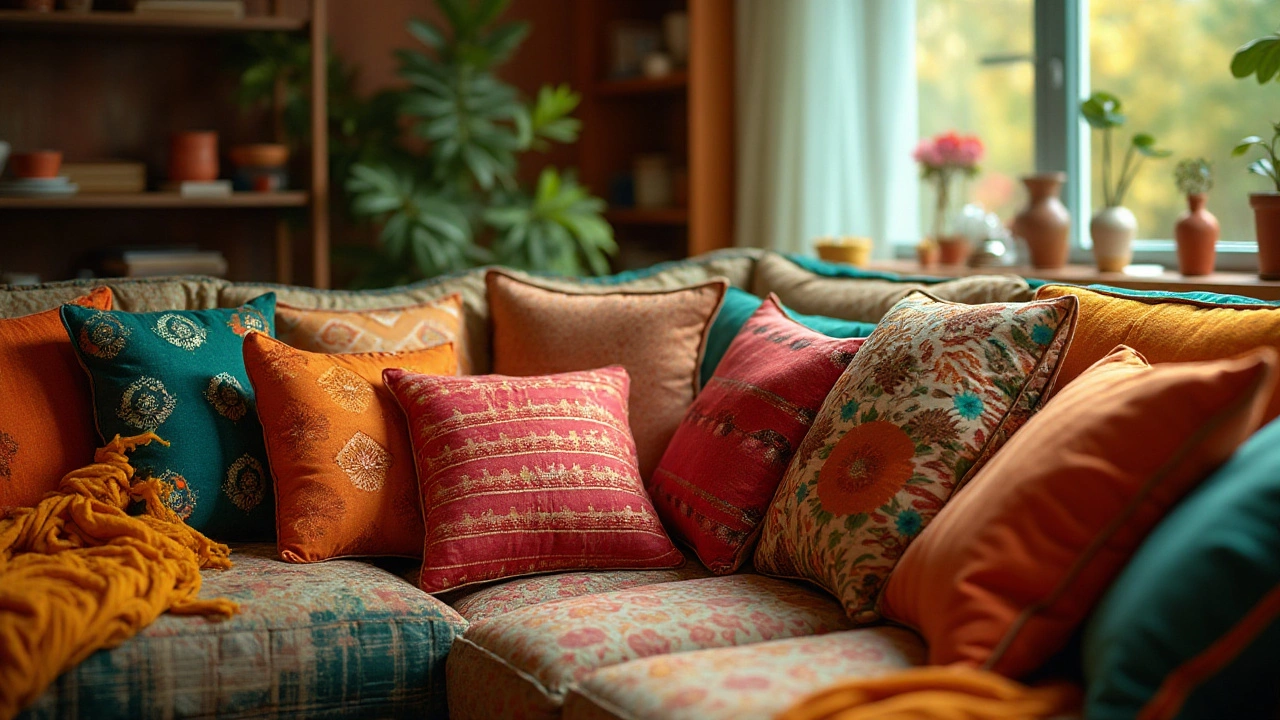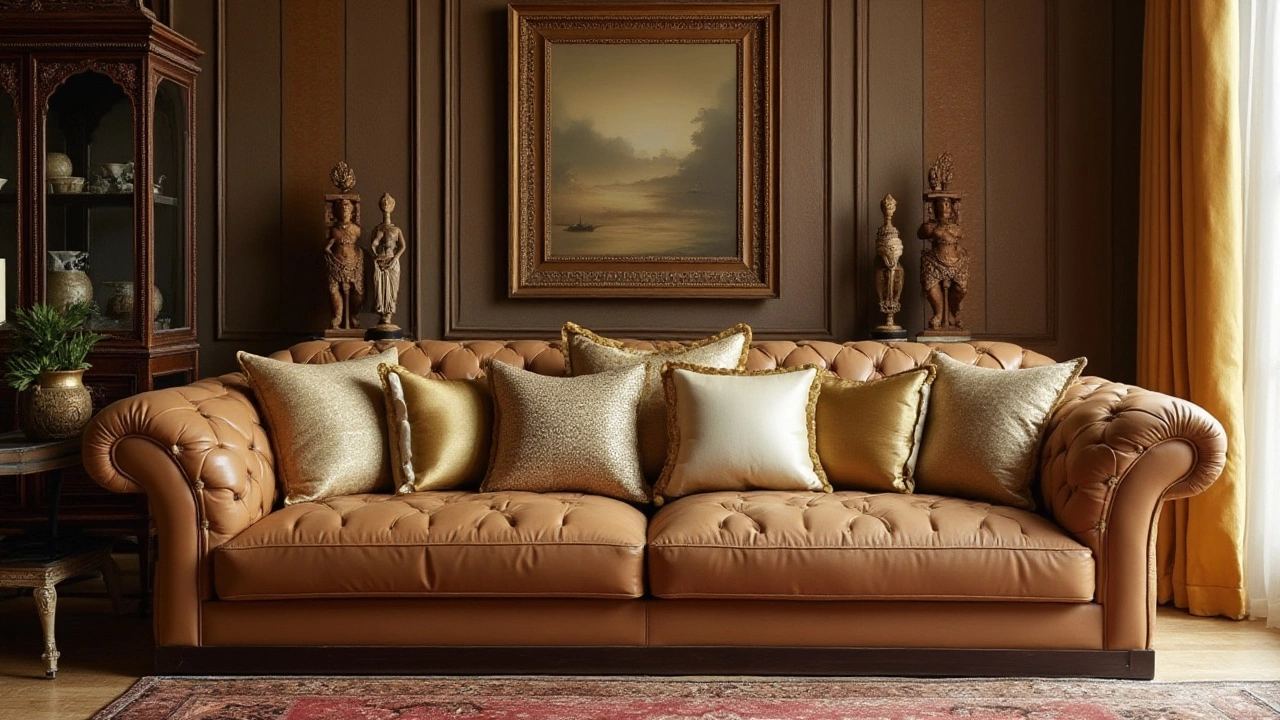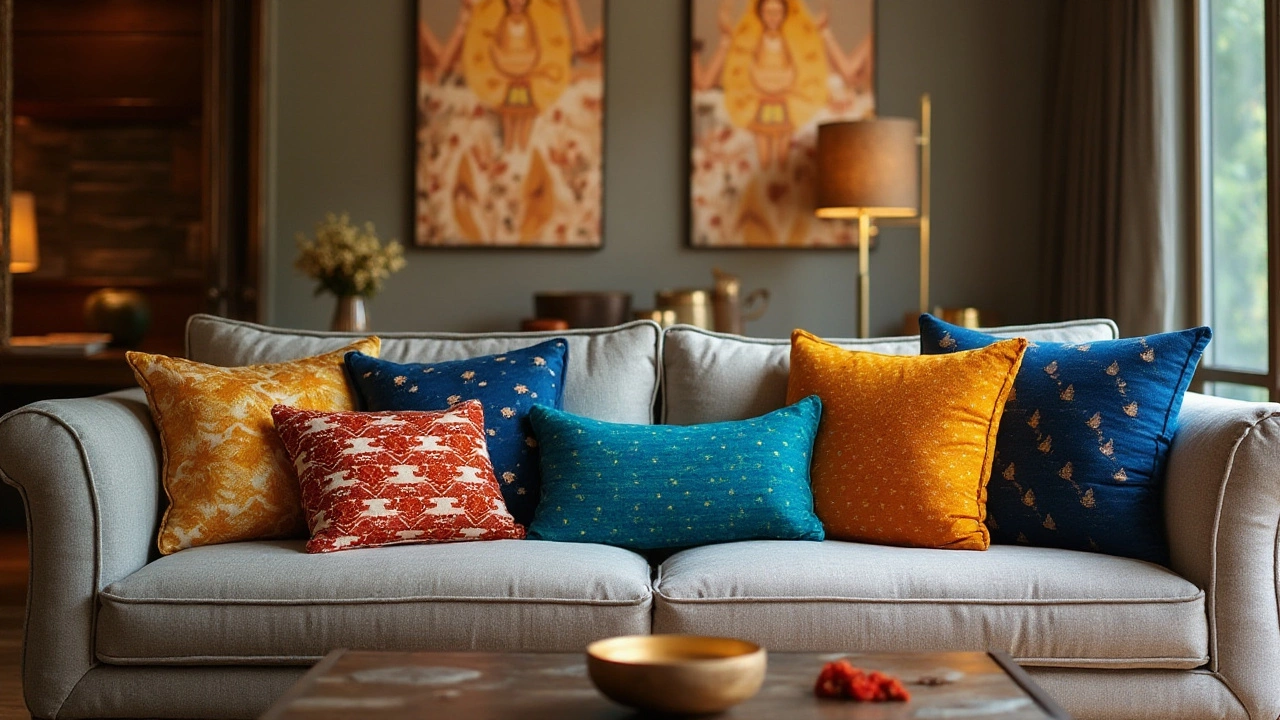Choosing the right number of cushions for your sofa is a bit like picking the perfect toppings for your favorite pizza. Too little and it feels bare, too many and it's overwhelming. Striking a balance is the key to harmonious and inviting seating.
In this guide, we'll walk you through the world of cushions—covering the best numbers, styles, and tips to create a space that feels just right. Whether you're starting from scratch or simply refreshing your living room's look, understanding cushion dynamics will help you craft that cozy corner you've always wanted.
- Finding the Right Balance
- Colors and Patterns: Making the Right Choice
- Different Arrangements for Different Styles
- Practical Tips for Cushion Care
Finding the Right Balance
Settling on the ideal number of cushions for your sofa hinges largely on personal comfort and aesthetic preference. It's an invitation to craft a seating area that reflects your unique style, while simultaneously embracing functionality. Too many cushions can transform even the plushest living room decor into a challenge of balance while getting seated, whereas too few might leave the space feeling sparse and underdressed. A common rule of thumb suggests starting with an odd number of cushions, often three or five, as it creates visual intrigue and asymmetry that tends to be more appealing to the eye.
For a sleek, modern look, you might opt for two larger cushions. Such arrangements are ideal for smaller spaces or minimalist decor, where less clutter aligns with the overarching theme. A more eclectic interior might benefit from an array of differently sized cushions, offering both variety and a chance to play with textures and patterns. A satisfying mix, experts suggest, aligns with Tischler's Ratio, a recommended guideline where at least one-third of your sofa is left free for seating. Ensuring cushion placement that respects this ratio can help maintain a harmonious balance in your space.
Design expert Jane Lockhart once noted, "The key to a beautifully styled pad is not sacrificing comfort for looks, but blending them both. A cushion should draw you in, not force you to sit elsewhere."
There are practical dimensions to consider too. For families and homes bustling with activity, cushions shouldn't just be pretty; they should be durable and easy to manage. Pillow fights, accidental spills, or even the sun's wear from a nearby window call for cushion covers that can be easily washed or replaced. Remember to align cushion fabric with the durability that matches your household's lifestyle. Cushion arrangement directly impacts the room's energy flow, a principle echoed in Feng Shui, which often highlights the importance of creating inviting and accessible seating areas. Considering all these factors will allow you to find that sweet spot where comfort and design meet.

Colors and Patterns: Making the Right Choice
Choosing the right colors and patterns for your sofa cushions can have a transformative impact on the ambiance of your living room. It's akin to selecting the perfect outfit for an important occasion; the details matter immensely. Color isn't just a visual delight; it's an emotion, a mood setter that can sway how a room feels. In living spaces that double up as family lounges and guest areas, cushion colors need to harmonize with the sofa and the broader decor theme, offering warmth or refreshing a room without demanding a complete overhaul.
Begin by analyzing the color scheme of your room. Neutral shades like beige or gray offer a versatile base, letting your cushion colors pop without clashing with wall colors or other furniture. Pair a muted sofa with dark, rich tones like emerald green or deep navy for a sophisticated touch. If your sofa is a bold shade, such as red or teal, consider cushions in complementary tones or patterns with hints of the sofa color. This creates a lively, cohesive look that ties the space together.
Living room decor can be greatly enhanced with patterns, adding interest and depth to your sofa. Patterns should be chosen with care, ensuring they complement each other without creating visual noise. Mixing patterns can be daunting, but when done right, it results in a dynamic and well-balanced arrangement. A commonly used formula is to mix three patterns in varying scales: a large-scale pattern, a medium-sized one, and a small, subtle pattern that ties them together. Always ensure that these patterns share a common hue to maintain harmony.
"Color is a power which directly influences the soul," said painter Wassily Kandinsky. This notion holds true in décor, where color sways perception and atmosphere. When selecting colors and patterns, remember that the emotional response is as crucial as the visual appeal.
Experimentation is vital. Don’t be afraid to play with seasonal colors, which can refresh your space with little effort. Spring might call for bright, airy pastels, while autumn leans towards cozy, warm palettes. Investing in a separate set of cushion covers for each season can keep your living room feel fresh and exciting without necessitating major changes. If you prefer a more consistent appeal, opt for classic colors like white or black and introduce patterns subtly via textures, like embroidery or weaving, rather than bold prints.
For those with an eclectic style, clashing colors can work marvelously if done intentionally. Bold cushions against a vibrant sofa can make a statement, exuding a bohemian flair. Meanwhile, for a more serene, minimalist style, sticking to a monochromatic scheme with gentle variations in hue can evoke a peaceful, cohesive look. Strategically using colors and patterns doesn’t just elevate appearances; it creates conversations, initiates emotions, and improves the living experience.

Different Arrangements for Different Styles
When it comes to arranging sofa cushions, style can vary greatly, often depending on personal taste and the overall vibe of your home. One of the most popular styles is the classic symmetrical arrangement, which tends to suit traditional and formal living rooms. Imagine a set-up where the cushions mirror each other on either side of the sofa—this creates a neat and tidy appearance, often using cushions of the same size, shape, and color for uniformity. An example would be placing two large cushions on either end with a smaller one centered between them, creating a balanced aesthetic that is pleasing to the eye.
Conversely, a more modern or eclectic style might embrace asymmetry, where cushions of varying sizes, shapes, and patterns are placed in an apparently haphazard manner but are actually orchestrated to create a relaxed, laid-back vibe. Such arrangements encourage personality and a playful spirit, mixing and matching cushion colors and patterns to reflect personal flair. For instance, a wide, low-slung sofa might feature an array of differently sized cushions, ranging from oversized floor cushions to petite lumbar pillows, scattered across the sofa's surface.
"The beauty of cushions is that they allow you to change the feel of a room instantly," says interior decorator Jane Lockhart. "It's about finding what makes you comfortable, both physically and aesthetically."
For those who prioritize function without compromising on style, consider a balanced combination of form and comfort. This could involve positioning larger cushions at the corners to establish a firm seating structure, followed by medium-sized ones towards the center for mid-level support and then smaller cushions layered in front for decorative accents. This arrangement not only provides versatility in seating but also in rearranging or rotating cushions seasonally to match different livable environments. Incorporating texture into these arrangements by mixing velvet, leather, cotton, or knit fabrics can add an extra layer of interest to the living room decor, making the sofa a centerpiece of the interior design.
Minimalist interiors often trend towards fewer but distinct cushions, perhaps opting for a pair of bold, oversized accent cushions placed off-center to draw attention without clutter. This style is particularly effective in environments where space and simplicity are crucial, such as small apartments or sleek contemporary homes. Many minimalist enthusiasts prefer cushions with simple geometric patterns or monochromatic schemes, complementing other elements within the room. A minimalist approach not only lends a modern look but also serves a practical purpose by saving space and reducing visual noise. Whatever method resonates with your design sensibilities, aligning your cushion choices with the broader style of your home ensures cohesion and comfort.

Practical Tips for Cushion Care
Cushions are more than mere decorations; they're an essential component of your living room decor, contributing to the comfort and style of your home. To keep them in top condition, regular care is crucial. Begin by attending to the manufacturer's label, which is a treasure trove of information regarding cleaning instructions. Some cushions come with covers that can be machine washed, while others might require gentle hand washing or professional cleaning. This label is your best friend in preserving the fabric's integrity and the cushion's shape over time.
Dust is the enemy here, so consider using a vacuum with an upholstery attachment every couple of weeks. This tool helps to suck up loose particles before they settle deeply into the fabric fibers. To maintain the plushness and even wear of your sofa cushions, give them a good fluff and turn them regularly. By redistributing the stuffing, you not only improve their appearance but also prevent them from becoming lumpy or flat in certain areas. Another trick to prolong the life of your cushions is to rotate them, especially in homes with children or pets. Frequent use of certain spots can lead to uneven wear, so changing the cushion's position can help maintain uniformity.
"Proper care is the secret to lasting comfort," suggests renowned interior designer Jane Brighton. "Treat your cushions with attention and they'll repay you with years of support and style."
For those who love to add a splash of color or texture to their living space with seasonal cushion updates, having a strategy for swapping covers can be beneficial. Opt for cushion covers that feature zippers rather than buttons or ties. Zippers are generally more durable and less likely to snag or break. In the event of spills—which are inevitable—act quickly to blot the stain with a dry cloth, followed by a damp cloth if needed. Avoid rubbing the area excessively, as this can worsen the stain or damage the fabric.
If storage is part of your care regimen, especially when changing cushion covers seasonally, ensure that they're stored in a well-ventilated area. Adding silica gel packets to your storage boxes can be a lifesaver, helping to keep moisture at bay. With these practical tips, maintaining the aesthetic and comfort of your favorite seating arrangement becomes a breeze, allowing you to genuinely enjoy your surroundings. Take care of your cushions, and they will take care of you.
| Type of Cushion | Recommended Care |
|---|---|
| Foam | Spot clean and air dry, avoid long sun exposure |
| Feather | Fluff regularly, dry clean only |
| Synthetic | Machine wash covers, tumble dry low |
